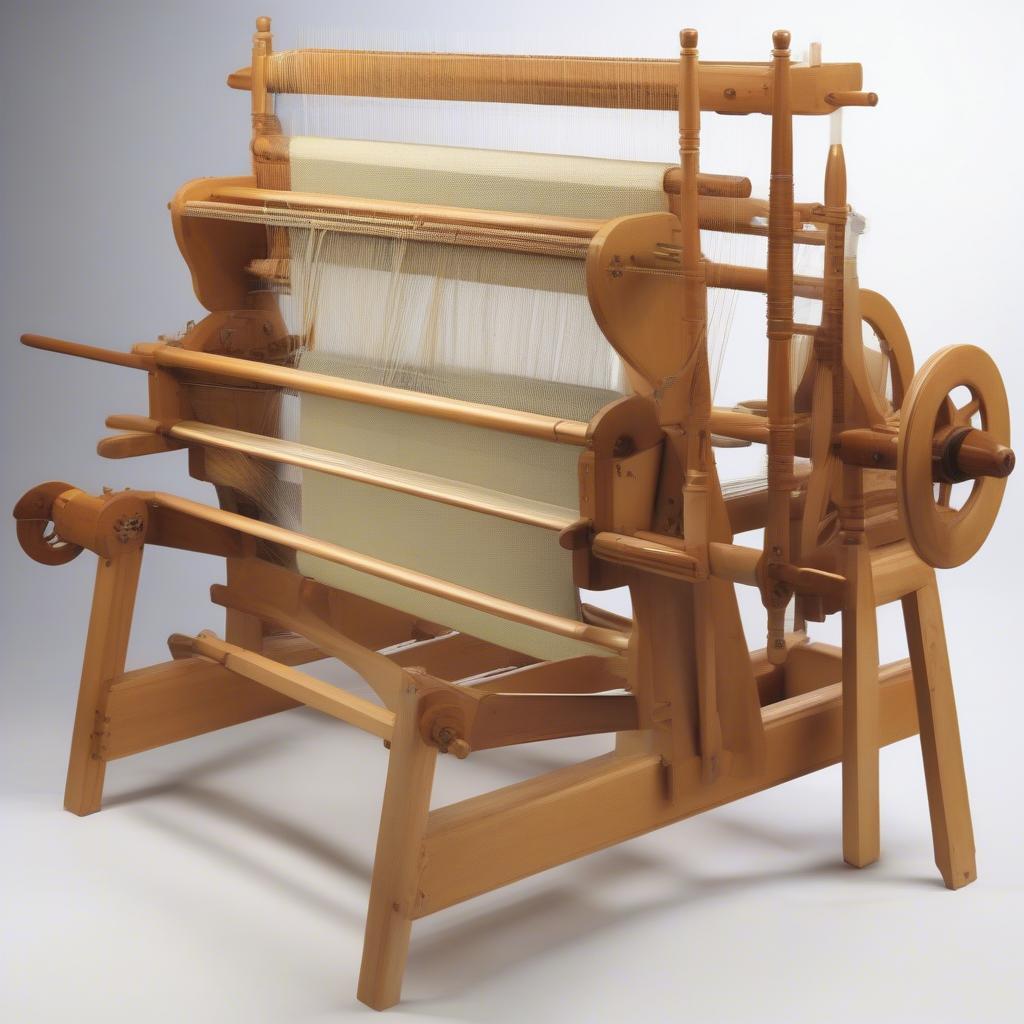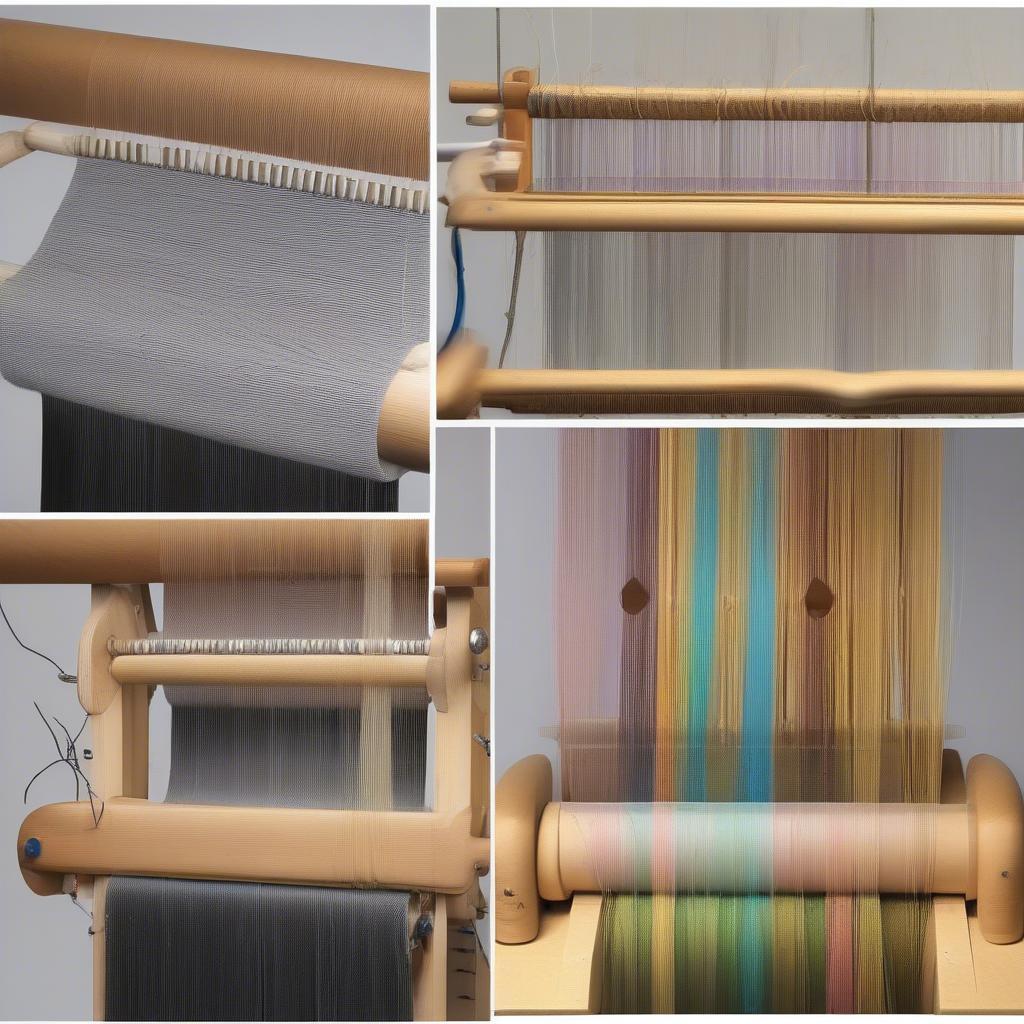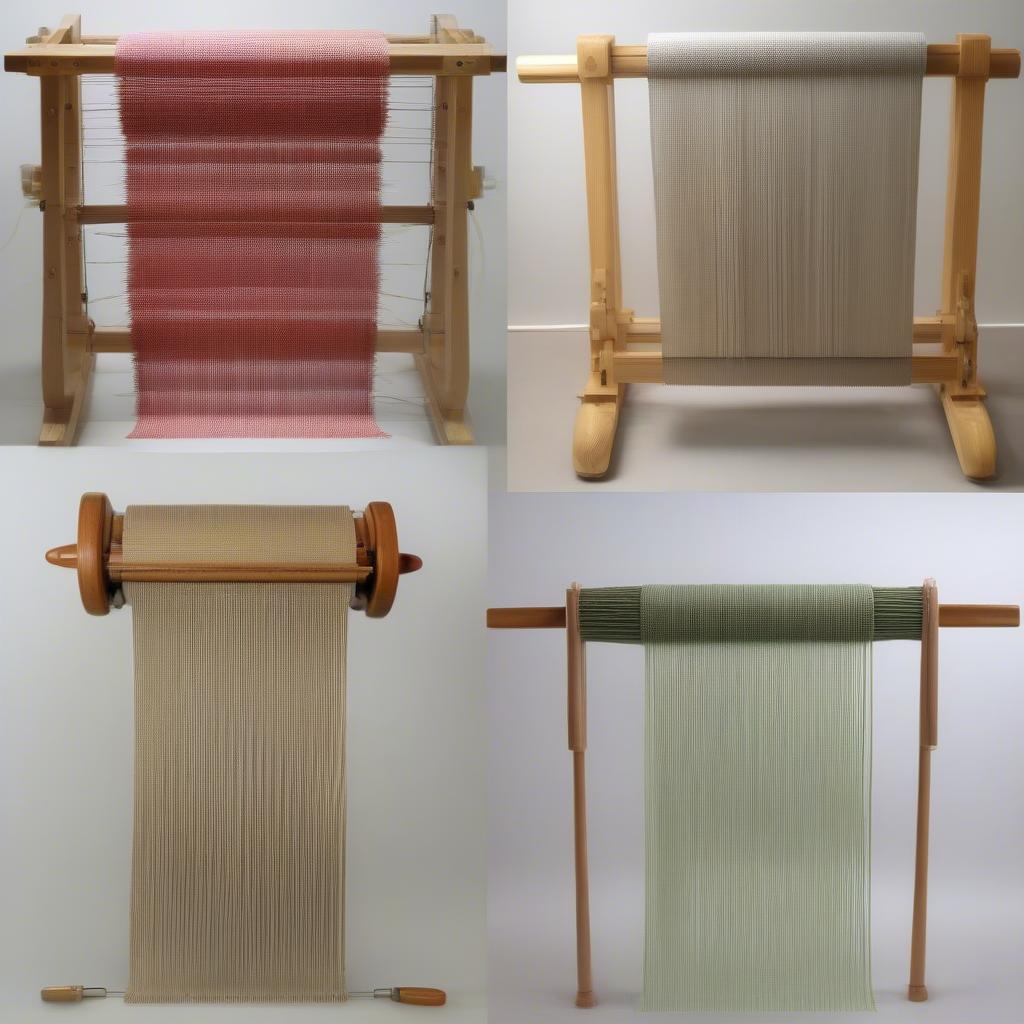Weave Table
How to Weave on a 4 Shaft Table Loom
Learning How To Weave On A 4 Shaft Table Loom opens up a world of creative possibilities, from intricate tapestries to cozy scarves. This comprehensive guide will walk you through the process, from warping to weaving your first project. We’ll cover everything you need to know to get started with your 4 shaft table loom.
Understanding the 4 Shaft Table Loom
A 4 shaft table loom, unlike simpler looms, offers greater control over the yarn and allows for more complex weave structures. This is achieved through the use of four harnesses (shafts) which lift and lower groups of warp threads, creating sheds for the weft yarn to pass through. The more shafts, the more intricate the patterns you can create!  Detailed view of the components of a 4 shaft table loom, including shafts, heddles, reed, beater, and warp beam.
Detailed view of the components of a 4 shaft table loom, including shafts, heddles, reed, beater, and warp beam.
Choosing the right loom is crucial. Check out our resources on table top weaving looms for sale uk if you’re looking for options.
Preparing the Loom: Warping
Warping, the process of preparing the lengthwise threads (warp), is the foundation of your weaving. It involves measuring and winding the yarn onto the warp beam and threading it through the heddles and reed, ensuring even tension and spacing. Accuracy during warping is essential for a successful final product.
Steps for Warping a 4 Shaft Table Loom
- Measure your warp: Determine the length and width of your project and calculate the required yarn length.
- Create a warping board or use a warping mill: This helps to measure and organize the warp threads evenly.
- Wind the warp: Carefully wind the yarn onto the warping board or mill, maintaining consistent tension.
- Transfer the warp to the loom: Carefully transfer the wound warp onto the warp beam of your loom.
- Thread the heddles: Following your chosen weaving pattern, thread each warp thread through the appropriate heddle on each shaft.
- Sley the reed: Thread the warp threads through the dents (spaces) in the reed, ensuring even spacing.
- Tie onto the cloth beam: Secure the warp threads to the cloth beam, ready for weaving.
 Step-by-step guide on warping a four-shaft table loom, showcasing the process of winding the warp, threading the heddles, and sleying the reed.
Step-by-step guide on warping a four-shaft table loom, showcasing the process of winding the warp, threading the heddles, and sleying the reed.
Thinking about other loom options? Compare the weaving double heddle rigid loom vs 4 shaft table loom to make the best decision for your needs.
The Weaving Process
With the loom warped, the exciting part begins – weaving! This is where you interlace the weft yarn (crosswise threads) with the warp, creating the fabric. Using the treadles, you lift and lower the shafts, forming sheds for the shuttle carrying the weft to pass through.
Basic Weaving Techniques on a 4 Shaft Table Loom
- Plain Weave: The simplest weave, created by alternating lifting shafts 1 & 3 and 2 & 4.
- Twill Weave: Produces a diagonal pattern by shifting the lifting sequence of the shafts.
- Satin Weave: Creates a smooth, lustrous surface by floating the weft yarn over several warp threads.
 Illustrations of plain, twill, and satin weave structures created on a four-shaft table loom.
Illustrations of plain, twill, and satin weave structures created on a four-shaft table loom.
If you’re interested in a specific table loom, you might want to check out the lily table top weaving loom.
Troubleshooting and Tips
- Tight Warp Threads: Ensure consistent tension during warping to avoid uneven weaving.
- Broken Warp Threads: Keep extra warp yarn handy for repairs.
- Uneven Weft Tension: Practice a consistent beat (packing down the weft).
Are you interested in tablet weaving too? Maybe a table loom for tablet weaving could be a good option.
Conclusion
Mastering how to weave on a 4 shaft table loom takes time and practice. Embrace the learning process, experiment with different yarns and patterns, and enjoy the creative journey of weaving. Explore our range of weaving table loom for sale to find your perfect match.
FAQ
- What is the advantage of a 4 shaft table loom? A 4 shaft table loom allows for a wider variety of weaving patterns compared to a simpler loom.
- What is the difference between warp and weft? Warp threads run lengthwise on the loom, while weft threads run crosswise.
- What is a heddle? A heddle is a wire or string with an eye in the middle through which a warp thread is passed.
- What is a reed? A reed is a comb-like device that spaces the warp threads evenly.
- What is a shuttle? A shuttle carries the weft yarn across the shed.
- How do I choose the right yarn for weaving? Consider the desired drape and texture of your project.
- Where can I find weaving patterns? Books, online resources, and weaving communities offer a wealth of patterns.
Need assistance? Contact our 24/7 customer service team at +84 388 951 999 or visit us at Hanoi, Vietnam or Tech Avenue, Suite 12, San Francisco, CA 94105, USA.
